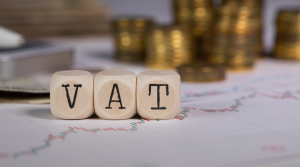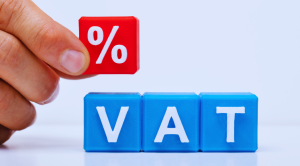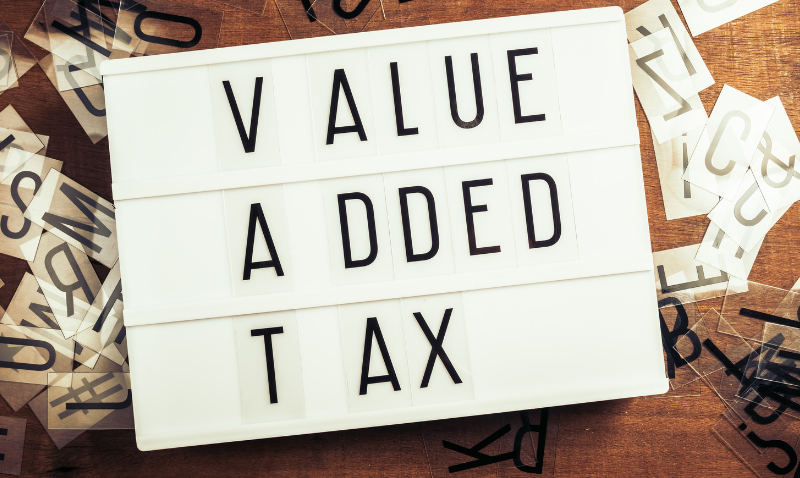If you run a business in the UK, knowing how to check a VAT number is important. A Value Added Tax (VAT) number is a unique identifier HM Revenue & Customs (HMRC) assigns businesses that are registered for VAT. It is used to track the amount of VAT paid and collected by the business. In this blog post, we will cover everything you need to know about VAT numbers in the UK, including how many digits it has, how to find a business’s VAT number, what the current VAT rate is, and most importantly, how to check if a UK VAT number is valid or not. We will also discuss if all countries have VAT numbers and whether or not it’s the same as a UTR number. So let’s dive in!
What is a VAT Number?

VAT number, also known as a Value Added Tax registration number, is a unique identification number issued by HM Revenue and Customs (HMRC) in the United Kingdom. It is assigned to businesses registered for VAT and used for tax purposes. The VAT number is typically displayed on invoices and other official documents, and it allows businesses to charge and reclaim VAT on their goods or services. It is important for businesses operating in the UK to have a valid VAT number in order to comply with tax regulations and properly account for VAT transactions.
How to Find a Business VAT Number?
Finding a business VAT number can be crucial when conducting business transactions. You can use several methods to find a company’s VAT number. First, you can visit the company’s website and look for their VAT number in the footer or contact information section. Another option is to search the VAT Online database, which provides access to registered VAT numbers for businesses in certain countries.
Additionally, you can check invoices from the company, as they are often required to include their VAT number for tax purposes. You can contact the company directly and ask for their VAT number if all else fails. By utilizing these methods, you can ensure that you have the necessary information for conducting business in compliance with tax regulations.
How Many Digits is a Company VAT Number?
A company VAT number typically consists of nine (9) digits. This unique identification number tracks and monitors a company’s transactions for tax purposes. It is important for companies to ensure that their VAT number is correct and up-to-date in order to comply with tax regulations and avoid any potential penalties or fines. If you are unsure about the format or validity of a VAT number, it is recommended to consult with a tax professional or contact the relevant tax authority for clarification.
What is the VAT Rate in the UK?
The VAT rate in the UK is currently set at 20% for most goods and services. This means that an additional 20% of the total price will be added as VAT when you purchase an item or use a service. However, it’s important to note that there are some exceptions and reduced rates for certain goods and services. For example, some essential items like food, children’s clothing, and books are subject to a reduced rate of 5% VAT. It’s always a good idea to check the specific VAT regulations for the goods or services you are purchasing to ensure you understand the correct rate that applies.
How to Check a UK VAT Number?

Checking a UK VAT number is a straightforward process. Visit the website www.gov.uk/check-uk-vat-number, where you will find a tool the UK government provides specifically for this purpose. This tool allows you to enter the VAT number you wish to verify and will provide you with instant confirmation of its validity. It’s important to check the VAT number of businesses you are dealing with, as this can help ensure that they are registered for VAT and comply with relevant tax regulations. By using the online tool, you can have peace of mind knowing that the VAT number you are dealing with is legitimate.
How to Verify a VAT Number’s Validity?

If you need to verify the validity of a VAT number in the UK, one option is to call the VAT helpline at 0300 200 3700. This helpline is provided by HM Revenue and Customs (HMRC) and can assist you with any questions or concerns related to VAT registration and compliance. When calling the helpline, be prepared to provide the VAT number in question and any relevant details or supporting documentation.
The helpline staff will then be able to verify the validity of the VAT number and provide you with any additional information or guidance that you may need. Remember, it’s always important to ensure that any business you are dealing with is properly registered for VAT, so don’t hesitate to reach out for assistance if you have any doubts or concerns.
Do All Countries Have VAT Numbers?
Not all countries have VAT numbers. Value Added Tax (VAT) is a consumption tax imposed on goods and services in many countries worldwide. However, the specific tax structure and terminology can vary from country to country.
Some countries use different names for their equivalent of VAT, such as Goods and Services Tax (GST) or Sales and Use Tax. Additionally, some countries may not have a VAT or similar tax system at all. It is important to research the tax requirements of each individual country when conducting business internationally to ensure compliance with local regulations.
Is a VAT Number the Same as a UTR Number
A VAT number and a UTR number are two separate identification numbers used for different purposes. A VAT number, also known as a Value Added Tax number, is a unique identifier assigned to businesses that are registered for VAT. This number is used to identify the business for tax purposes and to track its VAT obligations.
On the other hand, a UTR number, which stands for Unique Taxpayer Reference, is a unique identifier assigned to self-employed individuals or with income that is not taxed through the Pay As You Earn (PAYE) system. This number is used by HM Revenue and Customs (HMRC) to identify individuals for tax purposes.
While both numbers are important for tax compliance, they serve different functions and are issued by different authorities. Understanding the distinction between them is important to ensure proper compliance with tax regulations.
Conclusion
Verifying the validity of a UK VAT number is crucial for businesses to ensure compliance and prevent fraudulent activities. There are simple steps you can follow to check a UK VAT number. By using the HMRC VAT helpline or the VIES website, you can easily verify the authenticity of a VAT number. It’s important to note that not all countries have VAT numbers, and a VAT number is not the same as a UTR number. Understanding the ins and outs of VAT numbers and their verification process is essential for businesses operating in the UK. Stay informed and protect your business by following these steps to check a UK VAT number.









